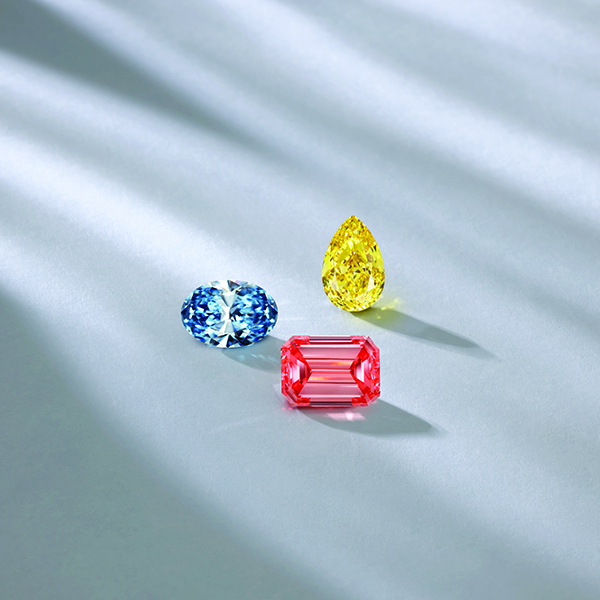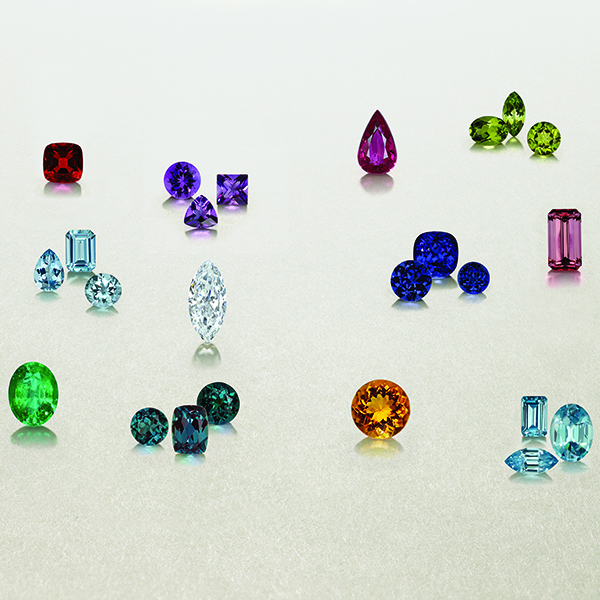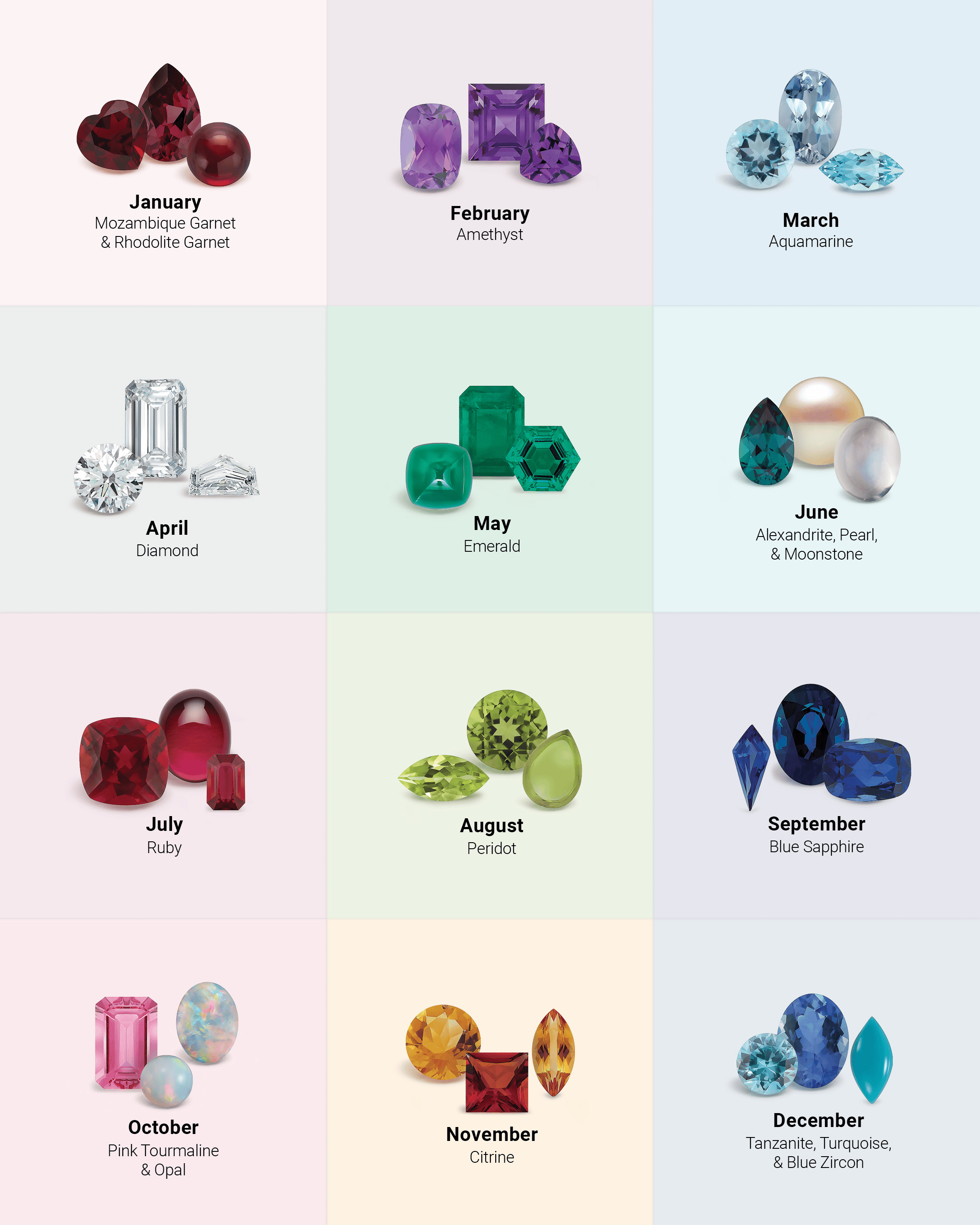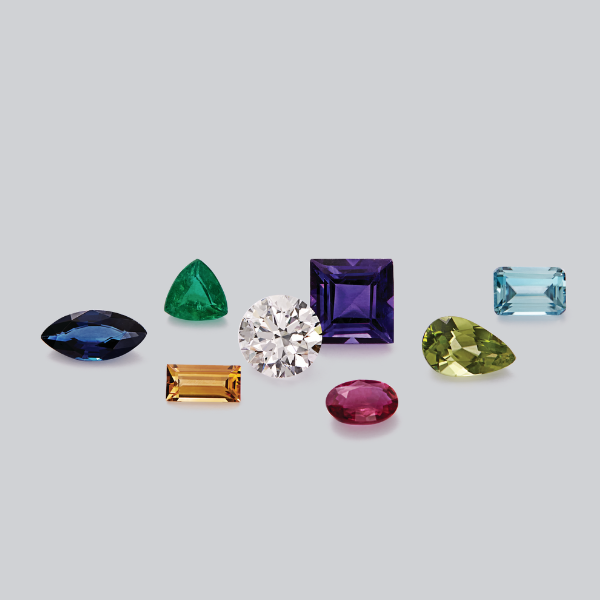Hurry Up, Sale Ends in
D |
H |
M |
S
Gemstones have captivated human imagination for centuries with their dazzling beauty, rarity, and symbolic significance. From adorning royal crowns to becoming cherished heirlooms, these natural wonders continue to hold a special place in our hearts and cultures.
Let’s explore what gemstones truly are, how they're formed, the different types, how they're graded, and showcase some exquisite gemstone jewellery pieces from our Sunshine Diamonds that might become your next treasured possession.

Gemstones are naturally occurring minerals or rocks that have been cut, polished, and crafted into exquisite pieces of jewellery and decorative items. Their aesthetics, scarcity, and intrinsic value have fascinated humans throughout history. Each gemstone boasts its own unique palette of colours that holds an irresistible charm. Beyond their beauty, these treasures have been cherished for their cultural significance, metaphysical properties, and believed healing abilities across civilisations.

Natural gemstones, also known as organic gemstones, represent a fascinating intersection of geology, chemistry, and physics. These extraordinary minerals form crystals within the Earth's crust under immense heat and pressure—a process that can take thousands or even millions of years. The captivating colours and remarkable transparency of gemstones result from exceptionally rare mineral transformations that occur deep within our planet.
The chemical composition of gemstones is incredibly diverse, with each type possessing its own unique mineral structure:
Diamonds are composed of carbon atoms meticulously structured in a crystalline lattice.
Rubies and sapphires are variations of the mineral corundum, coloured by trace elements such as chromium and iron
When light interacts with these minerals, fascinating optical effects like refraction, dispersion, and reflection occur, producing the mesmerising visual display that makes natural gemstones so alluring.

Gemstones are generally categorised into precious and semi-precious stones. Let's explore the "big four" precious gemstones that have been historically most valued:
Known as the "King of Gemstones," diamonds are renowned for their unmatched brilliance and durability. These dazzling gems form deep within the Earth's mantle and are predominantly used in creating stunning engagement rings and other high-end jewellery pieces.
The allure of sapphires has captivated generations with their deep blue shades. These valuable gemstones symbolise wisdom and add a touch of sophistication to any jewellery piece. Historical pieces like the "Hope Sapphire" are famous for their intriguing histories.
Rubies are deeply connected with passion and love. These vibrant gemstones are highly valued for their intense red hues and exceptional hardness. Throughout history, rubies have adorned the crowns of kings and emperors, symbolising power and wealth.
Emeralds are admired for their rich green hue, which signifies renewal and growth. These precious gemstones have a long tradition of appearing in royal jewellery collections, including Queen Mary's legendary emerald and diamond tiara.

While gemstones share similar quality factors to diamonds' 4C's (Cut, Clarity, Colour, and Carat), they are valued somewhat differently. For coloured gemstones, colour is by far the most important factor, whereas cut is usually considered the most crucial element for diamonds.
Most coloured gemstones derive their beauty from their colour—whether purple, blue, green, yellow, orange, or red. Three factors determine a gemstone's colour:
Hue: The pure colour on the spectrum, describing the dominant colour and any additional colours visible in the gem.
Tone: The lightness or darkness of a colour. In the GIA colour-grading system, tones range from very light to very dark.
Saturation or Intensity: The purity of the hue.
When selecting coloured gemstone jewellery, choose what you personally find beautiful. Due to the subtle differences in tone and hue, examine several options to find the one that appeals most to you. Each gem variety has an optimal hue, tone, and saturation—ask your jeweller to explain how different gemstones exhibit their optimal colour.
Gem cutters (lapidaries) work to achieve an ideal balance of colour, weight, and shape for mounting. A gemstone's size is naturally constrained—while large amethysts are readily available, finding a large alexandrite is extremely rare.
The cut describes both the shape and how the stone is fashioned. Some gemstones, like opal, are best suited to a smooth, rounded surface. Others, such as sapphire, typically feature precisely arranged flat, symmetrical planes called facets, which enhance the gem's colour. Modern cutters may also use convex or concave facets, essentially sculpting the coloured gemstone. A well-cut coloured gemstone will display its own distinctive and beautiful sparkle.
A coloured gemstone's clarity significantly contributes to its beauty. Unless a gemstone is opaque, how light moves through it affects its appearance. Some gemstones, like tanzanite, typically have few internal inclusions to interrupt light passage. Others have characteristic inclusions—emeralds, for instance, often contain what's called a "jardine" (garden), making each stone truly unique. Generally, fewer inclusions increase a stone's value, but these "imperfections" also give each gemstone its individual character.
Gemstones are measured both by carat weight and dimensions in millimetres. Millimetre measurements become particularly important when matching coloured gemstones for rings, earrings, or other jewellery pieces.
Gemstones represent nature's most brilliant artistic creations—born from extreme pressures and temperatures deep within the Earth, emerging as dazzling treasures that capture our imagination. Whether you're drawn to the fiery red of a ruby, the oceanic blue of a sapphire, the verdant green of an emerald, or the timeless brilliance of a diamond, gemstones offer a connection to both natural wonder and human craftsmanship.
Looking for a special gemstone? At Sunshine Diamonds, we offer a stunning selection of high-quality gems. Contact us to explore our collection and experience the benefits of buying with us, including expert guidance and secure service.
Plus early access to sales, birthday rewards & promotions.